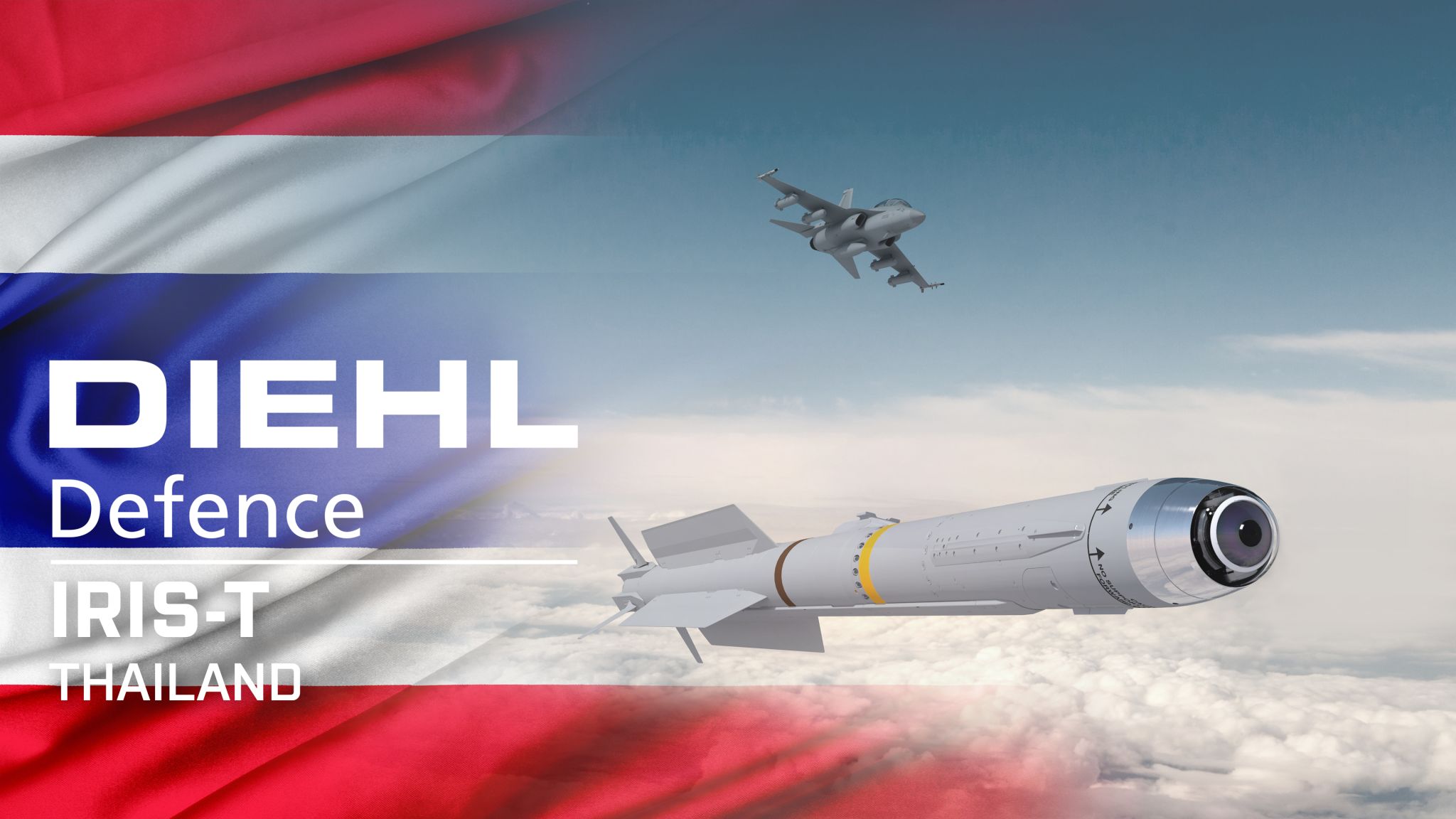This follows a long-lasting, extensive and successful collaboration of both sides on the deployment of IRIS-T missiles from Diehl Defence on the Royal Thai Air Force (RTAF) aircraft. Today, the RTAF is already operating Gripen, F-16 and F-5 aircraft, all of which already feature IRIS-T missiles from Diehl Defence as armament. The new contract, signed in Germany at the beginning of October, aims at enhancing the RTAF’s capability for the operation of IRIS-T across their entire fleet. It covers integration support, technical logistic support and live firing support.
By signing this agreement with Diehl Defence, proving their extraordinary capabilities to integrate and to certify new weapons into their existing fleet, following the successful integration of IRIS-T into their F-5 TH aircraft. For Diehl Defence this agreement is yet another milestone to strengthen the long-lasting collaboration with the RTAF and to widen the usage of IRIS-T to further platforms. Diehl Defence’s IRIS-T is a 5th-generation short-range air-to-air missile, fully integrated into Eurofighter Typhoon, Gripen, F-16, EF-18, F-5 and Tornado. Currently, the integration of the IRIS-T missile into the Korean Aerospace Industries (KAI) KF-21 fighter aircraft is ongoing.

The IRIS-T (infrared imaging system tail/thrust vector-controlled) is a medium range infrared homing missile available in air-to-air and surface-to-air variants. It also is called AIM-2000. The missile was developed in the late 1990s–early 2000s by a German-led program to produce a short to medium range infrared homing air-to-air missile to replace the AIM-9 Sidewinder in use by some NATO member countries at the time. A goal of the program was for any aircraft capable of firing the Sidewinder to also be capable of launching the IRIS-T. The air-to-air variant was fielded in 2005.
Surface-to-air defence systems variants came later, with the short-range IRIS-T SLS fielded in 2015, and the medium-range IRIS-T SLM fielded in 2022. One IRIS-T SLM battery, as supplied by Germany to Ukraine, consists of three truck-mounted launchers, carrying eight missiles each (with a range of 40 kilometres or 25 miles), and a separate command vehicle that can be positioned up to 20 kilometres (12 mi) away. The command vehicle integrates multiple radar sources, and is able to launch and track all 24 missiles simultaneously. The IRIS-T SLM can counter surface-to-air missiles and cruise missiles, including low-flying, stealthy missiles such as the Kalibr.












